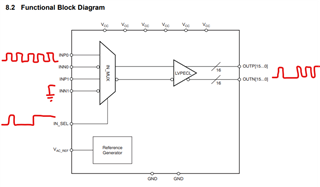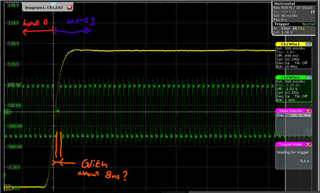Other Parts Discussed in Thread: CDCLVP1204
Hello,
Have a customer that can’t find any info in the datasheet of the speed of the IN_SEL pin of the CDCLVP1216:
In our application we want to be able to send the clocks in bursts and it is important that we have control over when the first pulse comes.
- What is the time from toggling the “IN_SEL”-pin until the “IN_MUX” is toggled?

Best regards
Jorgen


